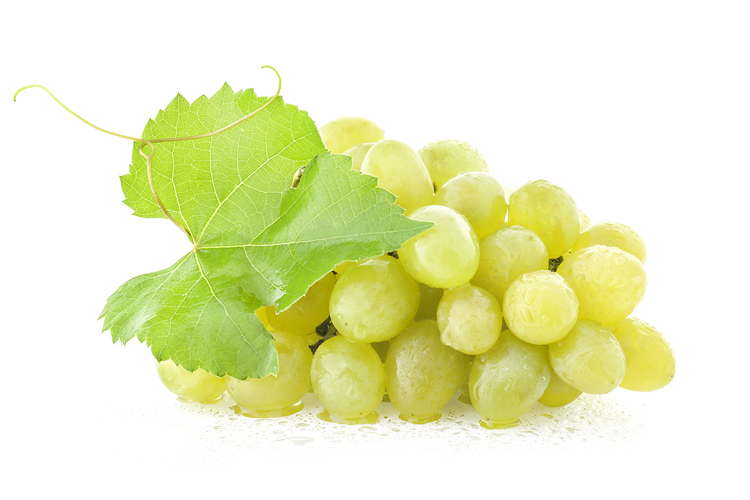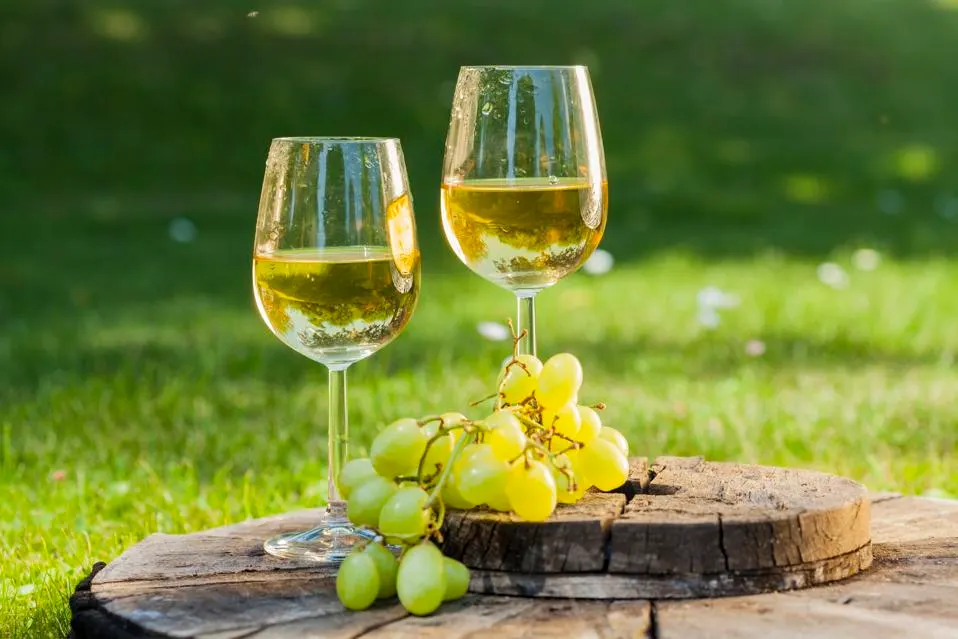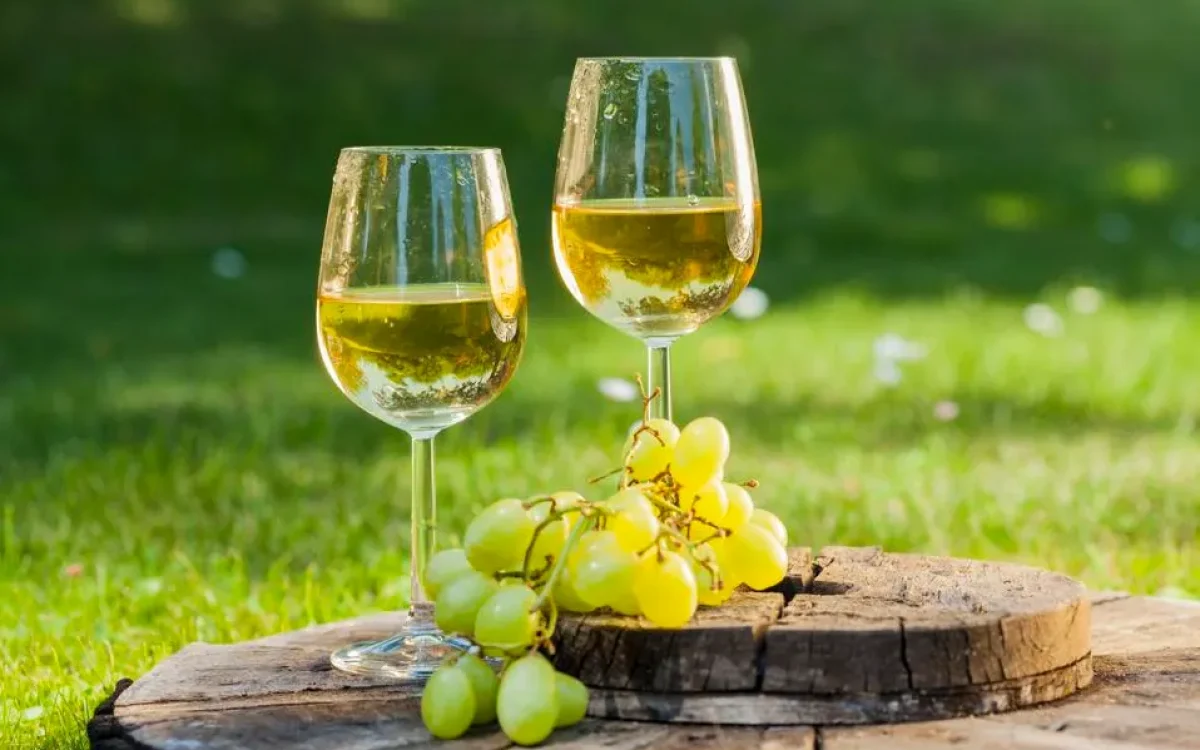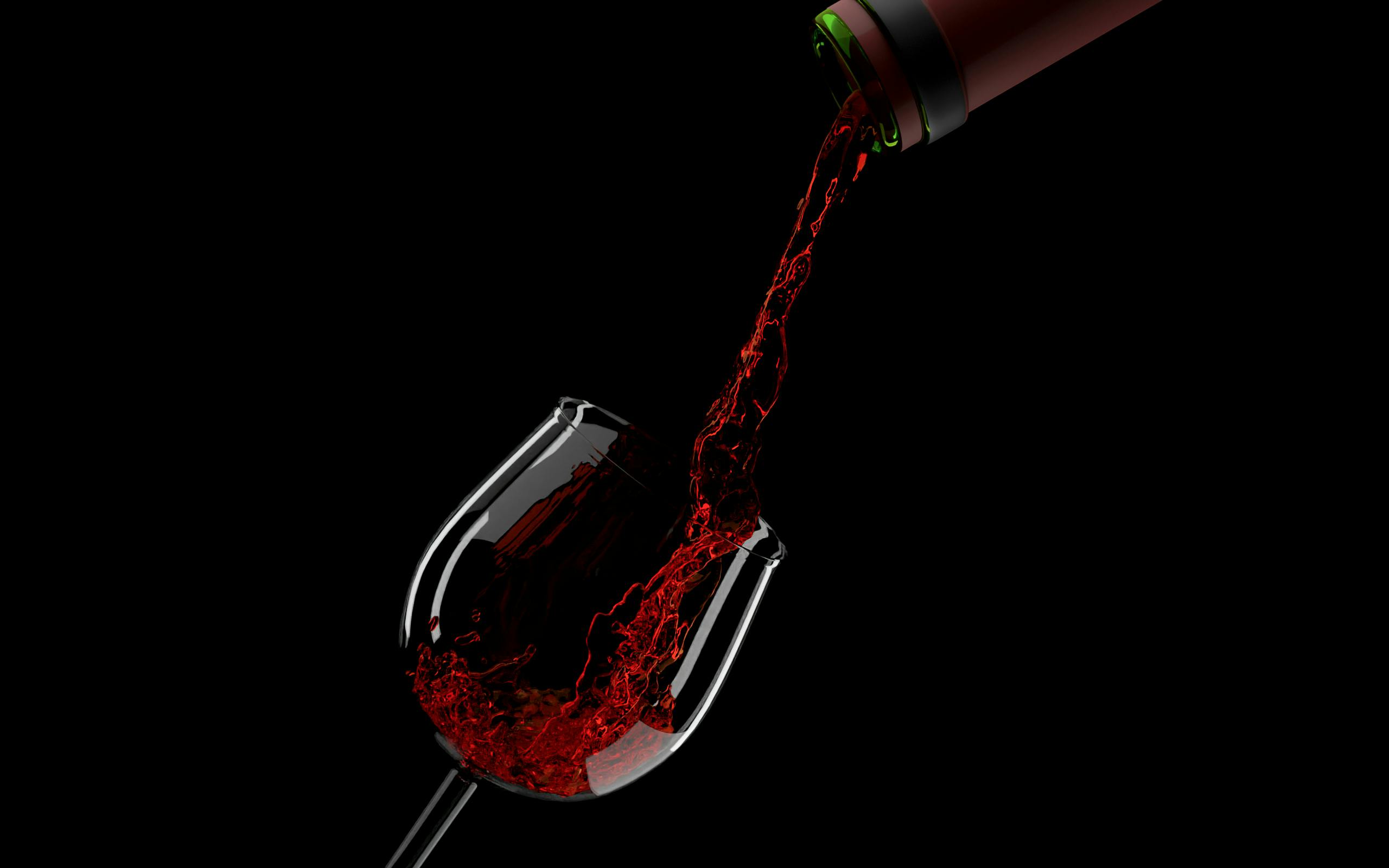White wine has long been cherished for its refreshing, delicate, and diverse array of flavors and styles. From crisp, citrusy Sauvignon Blanc to rich, oaky Chardonnay, white wines offer something for every palate. The production of white wine is a meticulous process that transforms grapes into a delightful beverage enjoyed worldwide. This guide will explore the intricacies of white wine, including its production methods, grape varieties, and notable regions.
The Basics of white wine making
The journey of white wine begins with the careful selection of grapes. Although predominantly made from green or yellow-skinned grape varieties, white wine can also be produced from red-skinned grapes if the juice is separated from the skins immediately after pressing. This unique aspect allows winemakers to create a variety of styles while maintaining the light color and refreshing qualities characteristic of white wines.

The key stages in white wine production include harvesting, crushing, pressing, fermentation, aging, and bottling. Each step is crucial in determining the final flavor profile and quality of the wine.
Harvesting
Harvesting is a critical step in the winemaking process. Grapes are typically harvested early in the morning when temperatures are cooler to preserve their freshness. The timing of the harvest is essential as it affects the wine’s acidity, sugar levels, and overall flavor profile. Grapes are usually picked by hand or machine, with careful attention paid to ensure that only ripe fruit is selected.
Crushing and Pressing
Once harvested, the grapes are crushed to release their juice. This process can vary depending on the winemaker’s preferences and desired style. In traditional methods, grapes are crushed by foot or using mechanical crushers. After crushing, the grape must (the mixture of juice, skins, seeds, and pulp) is pressed to separate the juice from the solids. The pressing process must be gentle to avoid extracting bitter compounds from the skins and seeds.
In some cases, winemakers may choose to allow a brief maceration period where the juice remains in contact with the skins before pressing. This technique can enhance flavor extraction and contribute to a more complex aromatic profile.
Fermentation
After pressing, the clear juice is transferred to fermentation tanks. Fermentation is where yeast is added to convert the sugars in the juice into alcohol. White wines are typically fermented at cooler temperatures (around 12–22°C or 54–72°F) compared to red wines. This lower temperature helps preserve delicate fruit flavors and aromas that are characteristic of white wines.
Fermentation can take anywhere from several days to a few weeks. During this time, winemakers closely monitor temperature and other factors to ensure optimal fermentation conditions. Some winemakers may choose to use wild yeast strains found naturally on grape skins or in the winery for fermentation, while others opt for cultivated yeast strains that can impart specific flavor profiles.
Aging
Once fermentation is complete, white wines may undergo aging in various vessels such as stainless steel tanks or oak barrels. The choice of aging vessel significantly influences the final character of the wine. Stainless steel aging preserves freshness and acidity while allowing fruity flavors to shine through. In contrast, oak barrel aging can impart additional complexity through flavors like vanilla, spice, and toast.
Aging periods can vary widely based on style; some white wines are released shortly after fermentation while others may be aged for several months or even years before bottling. During this time, winemakers may also perform techniques such as stirring the lees (dead yeast cells) in barrel-aged wines to enhance creaminess and mouthfeel.
Bottling
After aging, white wines are clarified and filtered before bottling to remove any remaining solids or impurities. The final product may undergo additional aging in bottles before being released for sale. Some winemakers choose to add a small amount of sulfur dioxide during bottling as a preservative to help maintain freshness.
“In a glass of white wine, you can taste the whispers of summer breezes and the laughter of sunlit gatherings.”
Crushing and Pressing
Once harvested, the grapes are crushed to release their juice. This process can vary depending on the winemaker’s preferences and desired style. In traditional methods, grapes are crushed by foot or using mechanical crushers. After crushing, the grape must (the mixture of juice, skins, seeds, and pulp) is pressed to separate the juice from the solids. The pressing process must be gentle to avoid extracting bitter compounds from the skins and seeds.
In some cases, winemakers may choose to allow a brief maceration period where the juice remains in contact with the skins before pressing. This technique can enhance flavor extraction and contribute to a more complex aromatic profile.
Fermentation
After pressing, the clear juice is transferred to fermentation tanks. Fermentation is where yeast is added to convert the sugars in the juice into alcohol. White wines are typically fermented at cooler temperatures (around 12–22°C or 54–72°F) compared to red wines. This lower temperature helps preserve delicate fruit flavors and aromas that are characteristic of white wines.
Fermentation can take anywhere from several days to a few weeks. During this time, winemakers closely monitor temperature and other factors to ensure optimal fermentation conditions. Some winemakers may choose to use wild yeast strains found naturally on grape skins or in the winery for fermentation, while others opt for cultivated yeast strains that can impart specific flavor profiles.
Aging
Once fermentation is complete, white wines may undergo aging in various vessels such as stainless steel tanks or oak barrels. The choice of aging vessel significantly influences the final character of the wine. Stainless steel aging preserves freshness and acidity while allowing fruity flavors to shine through. In contrast, oak barrel aging can impart additional complexity through flavors like vanilla, spice, and toast.
Aging periods can vary widely based on style; some white wines are released shortly after fermentation while others may be aged for several months or even years before bottling. During this time, winemakers may also perform techniques such as stirring the lees (dead yeast cells) in barrel-aged wines to enhance creaminess and mouthfeel.
Bottling
After aging, white wines are clarified and filtered before bottling to remove any remaining solids or impurities. The final product may undergo additional aging in bottles before being released for sale. Some winemakers choose to add a small amount of sulfur dioxide during bottling as a preservative to help maintain freshness.
Popular White Wine Grapes

The diversity of white wine largely stems from the wide array of grape varieties used in its production. Each grape contributes unique flavors and characteristics that appeal to different palates.
Chardonnay: One of the most popular white grape varieties globally, Chardonnay adapts well to various climates and winemaking styles. In cooler regions like Chablis, it produces crisp wines with mineral notes and green apple flavors; warmer climates yield richer expressions with tropical fruit notes and buttery textures due to oak aging.
Sauvignon Blanc: Known for its vibrant acidity and herbaceous flavors such as grass or green pepper alongside citrus notes like lime or grapefruit. Sauvignon Blanc thrives in cooler climates like New Zealand’s Marlborough region or France’s Loire Valley.
Riesling: A highly aromatic grape that can produce wines ranging from dry to sweet. Riesling often exhibits floral aromas paired with citrus flavors like lemon or lime. It excels in cooler climates such as Germany’s Mosel region where it develops high acidity balanced with sweetness.
Pinot Grigio/Pinot Gris: Produces light-bodied wines with crisp acidity and subtle fruit flavors such as pear or melon. Pinot Grigio is often associated with Italy while Pinot Gris refers to its French counterpart known for richer textures.
Gewürztraminer: A spicy aromatic grape with floral notes like rose petals alongside tropical fruit flavors such as lychee. Gewürztraminer thrives in cooler regions like Alsace in France.
Viognier: Known for its fuller body and rich apricot or peach flavors combined with floral aromas. Viognier is often used in blends but can also shine on its own as a varietal wine.
Moscato (Muscat): A sweet grape variety offering fruity aromas of orange blossom or peach; often used for dessert wines due to its natural sweetness.
“White wine is the poetry of the vineyard, capturing the sunlight and the spirit of the grapes in every sip.”
Popular White Wine Regions
Burgundy
Burgundy is synonymous with exceptional Chardonnay. The region is divided into several sub-regions, each producing wines with unique profiles. Chablis, known for its high acidity and mineral notes, produces steely Chardonnays that pair beautifully with seafood. In contrast, the Côte de Beaune offers richer, more opulent styles, often exhibiting buttery textures and notes of ripe stone fruits.
Loire Valley
The Loire Valley is a treasure trove of white wine diversity. Sancerre and Pouilly-Fumé are renowned for their Sauvignon Blancs, which are crisp and aromatic, often showcasing notes of green apple, citrus, and flint. Vouvray, on the other hand, primarily features Chenin Blanc, producing wines that can range from dry to sweet, with flavors of honey, apricot, and floral undertones.
Alsace
Located along the border with Germany, Alsace is known for its aromatic white wines. The region’s Rieslings are dry and complex, often displaying minerality and citrus flavors. Gewürztraminer, with its intense aromas of lychee and rose petals, offers a rich alternative. The region also produces Pinot Gris, which is fuller-bodied and can have a slightly oily texture.
Bordeaux
While Bordeaux is primarily known for its red blends, it also produces outstanding whites. The white wines are typically blends of Sauvignon Blanc and Sémillon. These wines can be crisp and refreshing or rich and creamy depending on the winemaking techniques used. The region’s Graves sub-region is particularly noted for its high-quality whites.
Veneto
Veneto is famous for its approachable white wines, particularly Pinot Grigio, which is light-bodied with bright acidity and notes of pear and green apple. The region is also home to Prosecco, a sparkling wine made from Glera grapes that has become immensely popular worldwide for its fruity flavors and refreshing bubbles.
Piedmont
Piedmont may be best known for its red wines, but it also excels in whites like Gavi (made from Cortese) and Arneis. Gavi is crisp with mineral notes and citrus flavors, making it an excellent pairing for seafood dishes. Arneis offers a more aromatic profile with floral notes and stone fruit flavors.
Sicily
Sicily has emerged as a significant player in the white wine scene, producing vibrant wines from indigenous grapes like Grillo and Carricante. Grillo typically has bright acidity with citrus and herbal notes, while Carricante is known for its complexity and minerality, often found in the Etna region.
Alto Adige
Nestled in the northern part of Italy, Alto Adige benefits from a unique climate that allows for high-quality grape production at high altitudes. The region produces crisp whites such as Pinot Bianco, which is known for its freshness and minerality, as well as elegant Rieslings that showcase floral aromas and stone fruit flavors.
Mosel
The Mosel region is iconic for its steep vineyards along the Mosel River. It specializes in Riesling, producing wines that range from dry to sweet. Mosel Rieslings are characterized by their bright acidity, floral aromas, and flavors of green apple and peach. The unique terroir imparts a distinct minerality that enhances the wine’s complexity.
Rheingau
Rheingau is another key Riesling-producing area in Germany. Its wines often have more body compared to those from Mosel due to the warmer climate. Rheingau Rieslings are known for their balance of sweetness and acidity, showcasing ripe fruit flavors alongside minerality.
Marlborough
Marlborough has gained international acclaim for its vibrant Sauvignon Blancs that burst with tropical fruit flavors like passionfruit and gooseberry. The region’s cool climate helps maintain high acidity levels, resulting in refreshing wines that are perfect for warm weather drinking.
Rueda
Rueda has established itself as a leading producer of white wines in Spain, primarily focusing on the Verdejo grape. Verdejo wines are aromatic with notes of citrus and herbs, often exhibiting a crisp finish that makes them highly enjoyable on their own or paired with food.
Conclusion
These regions represent just a fraction of the global landscape of white wine production. Each area offers distinct styles influenced by local grape varieties and winemaking traditions. Exploring these diverse regions not only enhances your palate but also deepens your appreciation for the art of winemaking around the world. Whether you prefer crisp Sauvignon Blancs or rich Chardonnays, there’s a white wine out there to suit every taste!




1 Comment
Tempora officia harum officia consequatur rerum molestiae numquam. molestiae et. Nesciunt qui omnis distinctio qui. Aut optio dolor eveniet. Sint iste sit et perferendis temporibus. adipisci voluptatem totam facere totam et itaque.